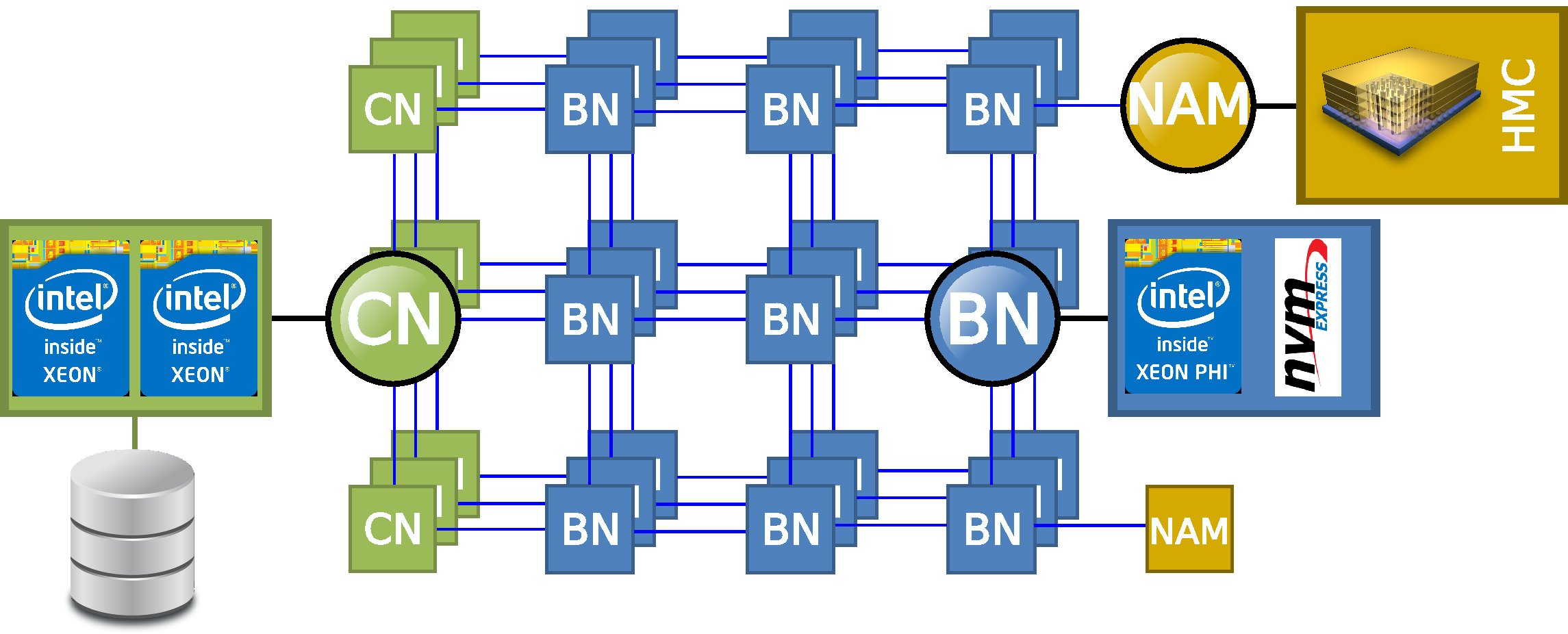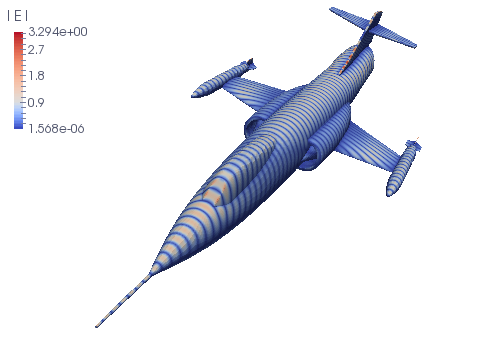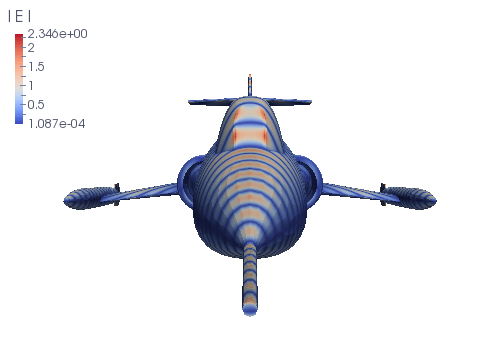Section: New Results
High performance numerical computing
Porting a DGTD solver for bioelectromagnetics to the DEEP-ER architecture
Participants : Alejandro Duran [Barcelona Supercomputing Center, Spain] , Stéphane Lanteri, Raphaël Léger, Damian A. Mallón [Juelich Supercomputing Center, Germany] .
We are concerned here with the porting of the GERShWIN DGDT solver for computational bioelectromagnetics to the novel heterogeneous architecture proposed in the DEEP-ER european project on exascale computing. This architecture is based on a Cluster/Booster division concept (see Fig. 5). The Booster nodes are based on the Intel Many Integrated Core (MIC) architecture. Therfore, one objective of our efforts is the algorithmic adaptation of the DG kernels in order to leverage the vectorizing capabilities of the MIC processor. The other activities that are undertaken in the context of our contribution to this project aim at exploiting the software environments and tools proposed by DEEP-ER partners for implementing resiliency strategies and high performance I/O operations. In particular, the Cluster nodes are used for running some parts of the pre- and post-processing phases of the DGTD solver which do not lend themselves well to multithreading, as well as I/O intensive routines. One possibility to achieve this is to consider a model in which these less scalable and I/O phases are reverse-offloaded from Booster processes to Cluster processes in a one-to-one mapping. This is achieved by exploiting the OmpSs offload functionality, developed at Barcelona Supercomputing Center for the DEEP-ER platform.
High order HDG schemes and domain decomposition solvers for frequency-domain electromagnetics
Participants : Emmanuel Agullo [HIEPACS project-team, Inria Bordeaux - Sud-Ouest] , Luc Giraud [HIEPACS project-team, Inria Bordeaux - Sud-Ouest] , Matthieu Kuhn [HIEPACS project-team, Inria Bordeaux - Sud-Ouest] , Stéphane Lanteri, Ludovic Moya, Olivier Rouchon [CINES, Montpellier] .
This work is undertaken in the context of the ANR TECSER project on one hand, and PRACE 4IP project on the other hand, and is concerned with the development of scalable frequency-domain electromagnetic wave propagation solvers, in the framework of the HORSE simulation software. HORSE is based on a high order HDG scheme formulated on an unstructured tetrahedral grid for the discretization of the system of three-dimensional Maxwell equations in heterogeneous media, leading to the formulation of large sparse undefinite linear system for the hybrid variable unknowns. This system is solved with domain decomposition strategies that can be either a purely algebraic algorithm working at the matrix operator level (i.e. a black-box solver), or a tailored algorithm designed at the continuous PDE level (i.e. a PDE-based solver). In the former case, we use the MaPHyS (Massively Parallel Hybrid Solver) developed in the HIEPACS project-team at Inria Bordeaux - Sud-Ouest.





